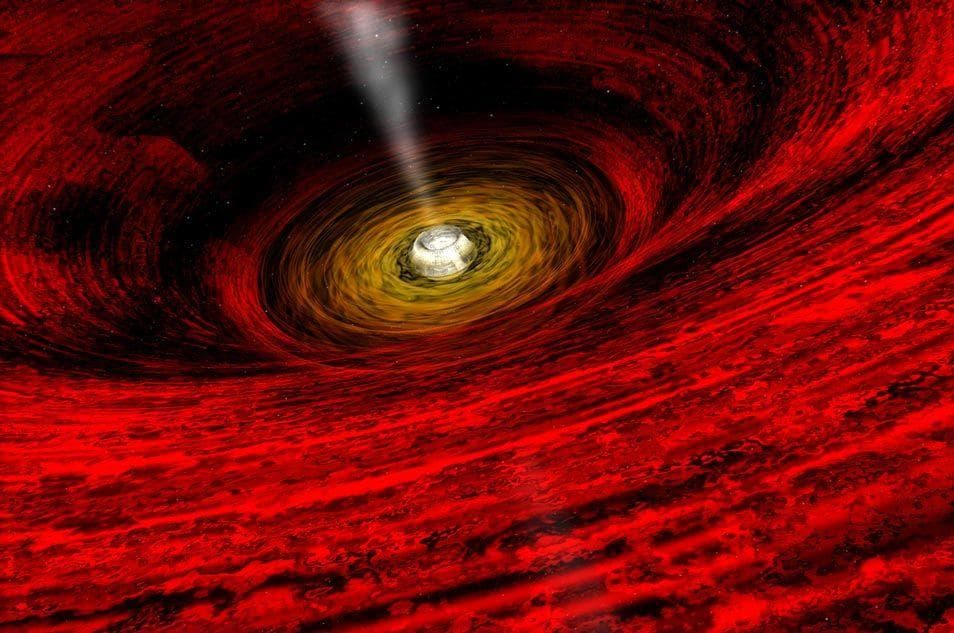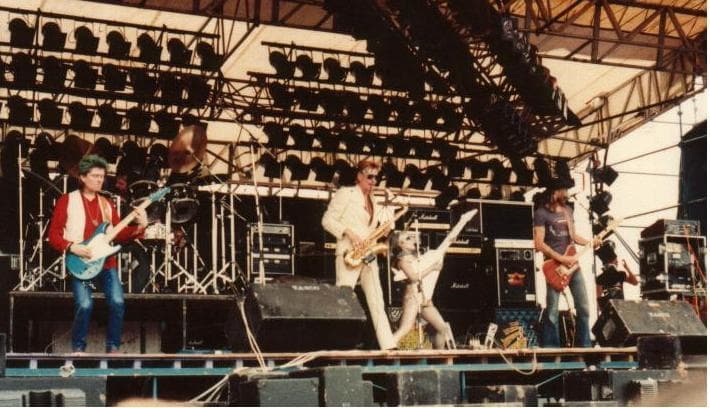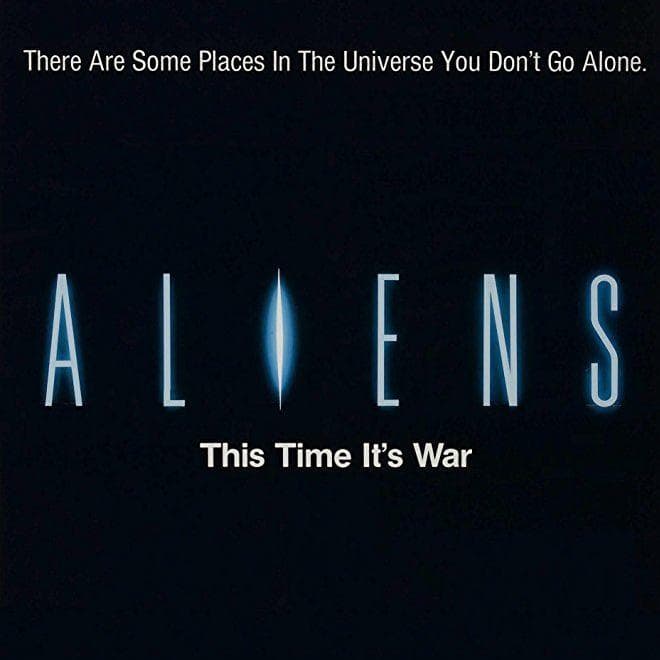-
(#1) Skylab Was The First American Space Station
The 1970s marked the waning of the NASA Apollo program, but several years before that program ended, plans were in the works for a new sort of human activity in space. A new goal for the United States and NASA was to explore how humans might live and work in space for extended periods.
Budgets were tight at the time, so NASA looked for safe, but affordable, ways to build a space station. They came up with Skylab, which was supported by a modified Saturn V rocket. Skylab was launched from NASA's Kennedy Space Center in Florida on May 14, 1973.
Skylab's mission was multi-faceted. In addition to learning more about how humans handled life in space, it also included an in-depth study of the Sun, observations of the comet Kohoutek, as well as a myriad of scientific experiments onboard.
-
(#2) It Was Designed To Go Up, Not Come Down
Launching Skylab was a piece of cake for NASA, as they'd been launching successfully for years. But, the size and scope of Skylab was quite different from the smaller capsules that splashed down after orbiting the earth or visiting the moon.
So, Skylab was actually launched with no firm plans as to how or when it would return to Earth.
-
(#3) Skylab Proved That Humans Could Live And Work In Space
After Skylab's first successful mission ended after 28 days in space in 1973, Dr. Ernst Stuhlinger, Associate Director of Science at the Marshall Space Flight Center, and Leland F. Belew, Manager of the Skylab program, wrote that “It may turn out to be the beginning of Man’s permanent foothold and settlement in space.”
A total of three separate Skylab crews successfully spent 171 days in space, with each new crew breaking the record set by the previous crew. There were no recorded instances of health problems or other concerns related to human life in space.
-
(#4) More Than 300 Scientific Experiments Were Conducted Aboard Skylab
News about activities aboard Skylab held the world in rapt attention. Not only were human beings living and working in space, but they were also actually communicating and cooperating with high school students on scientific projects. Talk about an interactive experience! Results of experiments connected with students on Earth as well as the astronaut's own projects were broadcast on TV and appeared on the covers of everything from Time to elementary school students' Weekly Reader. The experiments themselves ran the gamut - first, there were the obvious projects dealing with Earth observation, astronomy, and space physics. But everyone, and especially the astronauts, wanted to see how everything possible from Earth functioned in space.
Experiments with plants and insects were conducted, along with biomedical and biological studies. They even conducted research into micro-gravity technology. If all of this sounds like what goes on at the International Space Station, that is exactly right. Skylab, which NASA preferred to call an "orbital workshop," laid the foundation of research and experiments that would follow later in space.
-
(#5) New Lifesaving Technologies Were Developed Thanks to Skylab
When NASA was developing Skylab, they worked with Honeywell Corporation to create a device that would alert Skylab astronauts to the presence of smoke and gases. The ultimate result was what we call today a smoke detector. Countless lives have been saved since the commercial version of smoke detectors went on the market in 1979.
NASA was also concerned about making sure Skylab astronauts were able to get enough good nutrition during their extended stay in space. Research yielded considerable improvements to the quality of food that was sent to feed the Skylab crews. This, in turn, helped to improve the quality of commercial baby food and products for people whose health needs require extra nutrition.
-
(#6) The Last Skylab Crew Lived In Space For 84 Days
Skylab's third and final mission launched on July 28, 1973, with goals to continue conducting scientific and medical experiments, and maintain the space station. The mission completed 858 Earth orbits and 59 days of solar and Earth experiments.
Notably, the third Skylab mission surpassed the previous record for humans in space, which had been set by the crew of Skylab 2 only weeks earlier. The third mission also conducted a six hour space walk, during which they conducted a replacement for a sun shield. Among the many science experiments performed during their 84 day mission included an experiment designed by a student that included live spiders.
-
(#7) The Program Was Not Without Problems
Though Skylab was carefully designed and planned, the first crew to arrive had to deal with immediate concerns. It turned out that when Skylab was lifting off into space, a meteoroid shield separated from the structure and was lost, along with a solar panel. By the time the astronauts arrived, the temperature inside Skylab's workshop was a dangerously sweltering 125F degrees.
The crew was able to install a parasol sunshade, which lowered the workshop temperature to a much more comfortable 75F degrees. The entire process of securing the space station took ten days.
-
(#8) Daily Life Aboard Skylab Was Pretty Chill
While the interior of Skylab wasn't exactly luxurious by Earth standards, it was pretty impressive and comfy compared to what the Apollo and Gemini astronauts endured. The crew was able to move around easily, there was exercise equipment available, and even a shower and a toilet. The food quality was considerably improved from earlier space mission offerings, and the crew could hang around the workshop wearing t-shirts and slacks. They even were able to bring their own favorite music into space, via cassette tapes. NASA balked initially at the idea of bringing paperback books along, as they considered those a fire hazard, but eventually relented. Too bad they didn't have electronic tablets back in the day!
Was there a down side to living aboard Skylab? Definitely. The isolation became wearisome for the crew, and the lower gravity level resulted in their taking much longer to complete tasks. Everything just moved much more slowly than on Earth. The crew fell behind in their work and were actually chastised by Mission Control. They even told the crew to work through their meal and rest breaks so the work would be completed.
-
(#9) Big Plans For Skylab's Future Were Dashed Thanks To Solar Activity
When the third and final Skylab crew returned home, there were high expectations of future crews and projects to follow them. Further budget cuts and NASA's full dedication to get the space shuttle program up and running led to a sort of benign neglect of Skylab. It was also thought that once the shuttle was available, it could stop by Skylab to deliver new crew and check on things. NASA certainly had no intention of just abandoning the space station.
So Skylab sat and waited, still stocked with air and water. NASA underestimated the time it would take to implement the shuttle program, however. The first shuttle would not launch until 1980. While Skylab waited for its next crew, unusual solar activity increased, causing the Earth's atmosphere to shrink somewhat. This led to a drag on Skylab's orbit, and over time that orbit became narrower still.
It was hoped that once the shuttle was ready, it could install a booster rocket to help pull Skylab back to where it was originally situated. But the shuttle was not ready in time, and NASA began to predict Skylab's fall from space.
-
(#10) The World Watched And Waited For The Moment Skylab Would Crash To Earth
NASA predicted the Skylab would fall to Earth before 1980. So, for a couple of years, people all over the world would occasionally look into the sky and wonder when it would happen and where it would land. After all, Skylab was about the size of a house; people could die when it hit Earth. A variety of landing sites were predicted, and the impending crash became a sort of shared joke.
Even Saturday Night Live joined in, with actor John Belushi offering up the weekend news by ramming a model of Skylab into a globe. People had Skylab Crash parties, some wore crash helmets, or t-shirts with bull's-eye targets. There were even spray cans of "Skylab Repellant" for sale.
-
(#11) Skylab Fell To Earth In Western Australia, July 1979
Five years after the last Skylab mission was completed, the "orbital workshop" at last returned from whence it came. Its arrival caught everyone by surprise, even though everyone had been expecting a crash landing for a couple of years. It happened on July 11, 1979. Skylab returned in a brilliantly bright display, breaking up in the Earth's atmosphere. Debris from the space station spread over the southeast coast of Western Australia, specifically on the shore and beaches of the small town of Esperance.
Today there is a museum in Esperance, dedicated to Skylab and its fall to Earth.
-
(#12) There Was A Mutiny Aboard Skylab In 1973
Remember how Skylab's third crew complained about having to put in extra long hours due to the lower gravity slowing their very movements as they tried to complete their work? And how Ground Control was opposed to the crew taking breaks? Well, there is a little bit more to that story, and it involves a brief mutiny by the crew.
Commander Gerald Carr was a member of the third Skylab crew, and after trying to politely negotiate with NASA's ground crew, he attempted to reason with them. "On the ground," he stated, "I don't think we would be expected to work a 16-hour day for 85 days, and so I really don't see why we should even try to do it up here."
The Skylab crew still did not receive a satisfactory response, and six weeks into their mission, they decided to mutiny. They turned off all their methods of communications and took a day to just hang out and rest.
Next, Carr delivered the crew's demands to Mission Control. He announced that "We need more time to rest. We need a schedule that is not so packed. We don’t want to exercise after a meal. We need to get things under control."
The mutiny must have served its purpose, because soon the demands were met and the crew was allowed to have more say over how they planned their days and work.
-
(#13) Anita And Arabella -- Skylab's Web-Spinning Space Spiders
The third Skylab crew brought live spiders with them to conduct a student-designed experiment, studying what kinds of webs the spiders would spin in weightlessness. Student Judy Miles, from Lexington, MA, wanted to find out if spiders would be able to spin their webs in a near-weightless environment. The spiders were placed in their own picture-frame type boxes. Prior to liftoff, they were each given one fly to eat, and a small, soaked sponge for water.
The spiders were called Anita and Arabella. Once in space, both spiders began to make swimming motions, probably a reaction to suddenly losing Earth's gravity. Arabella managed to build a web, but the spiders did not fare well in space. Part of Arabella's web was removed in an effort to determine if she would try and rebuild, but she did not even attempt a second web. Both spiders became dehydrated and died during the mission. The webs were later examined and found to be of a finer thread than that from webs spun by the same spiders on Earth.
One of the spiders, Anita, is preserved at the Smithsonian Museum, where you can see her today.
-
(#14) A San Francisco Paper Offered Reward For First Piece Of The Crashed Skylab
As the summer of 1979 and the impending crash of Skylab approached, The San Francisco Examiner advertised a $10,000 prize to the first person who delivered a piece of Skylab debris to the newspaper's office within the first 72 hours of the space station's crash. Apparently, the newspaper staff figured only an American would try to claim the money, so the bet was a safe one. But, the Examiner was not counting on Stan Thornton, a 17-year-old resident of Esperance, site of where Skylab eventually crashed.
The young man instantly ran to his yard, picked up a few bits of Skylab debris, and literally took off to the airport, without a suitcase or even a passport, and he managed to make it to the office in San Francisco just in time to claim the reward, an impossible feat by today's standards.
New Random Displays Display All By Ranking
About This Tool
On October 1, 1958, NASA began formal operations. Since then, the space agency has achieved many milestone goals, including the Apollo moon landing, the Skylab space station, and the space shuttle. Skylab is the space station after the Apollo project, launched by the Saturn 5 rocket. Skylab was also the first space station in the United States and the largest spacecraft ever orbiting the earth.
This is one of the greatest achievements of mankind, which contributes to ultraviolet astronomy experiments, solar system research, and biological and medical research. It is a great time to learn more information and enjoy some available videos.
Our data comes from Ranker, If you want to participate in the ranking of items displayed on this page, please click here.
























